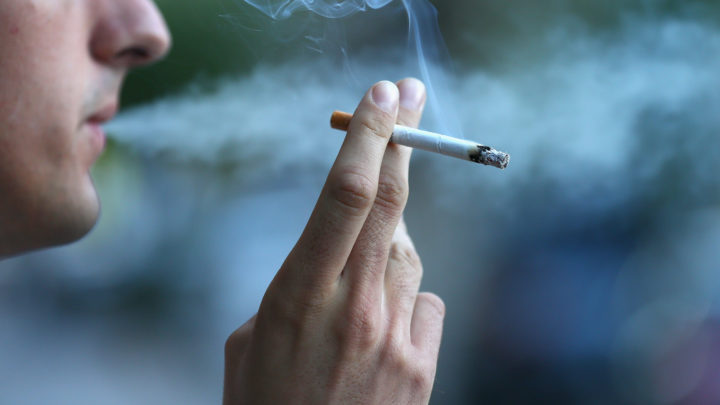There’s no such thing as a natural drought
Never mind the lack of rain in recent UK winters - it is our willingness to invest and build big that has really dried up.

It never rains but it pours scorn. That must be how many of England’s water companies feel as millions make fun of them. Having just declared a hosepipe ban and spent a fortune on posters declaring ‘WE ARE IN DROUGHT’, the heavens have opened. Result? The surreal combination of drought restrictions on water use going side-by-side with the wettest April since records began in 1910.
It is as if the declaration of drought were a latter-day raindance. Comedian Jimmy Carr quipped what everyone was thinking: ‘If this drought continues much longer, we’re going to run out of umbrellas.’ The combination of dramatic flooding in some parts of the country that are under drought restrictions caused one friend of mine to coin the term for our current water status: ‘flought’. Pictures of Thames Water’s bus adverts juxtaposed with people in the street huddling under brollies made newspaper front pages.
Yet, while the current situation is bizarre, the water companies do have a point. If the current storage sites are running low of water after two years of well-below-average rainfall, then we need to start preserving stocks. One month of heavy rain is welcome, but unless we have a particularly sodden summer and, more importantly, a damp-and-dreary winter, supplies could start to look very sparse indeed. That’s particularly true in the south and east of England, which depend on underground aquifers to store a large proportion of water supplies. The levels in these aquifers rely on winter rain to drip through the rocks above. Summer rain tends to run off, evaporate or get absorbed by growing plants. A quick look back to February and the warnings coming from Thames Water and others show how serious the problem had become before the deluge.
On Wednesday, responding to criticism of the drought declarations in the light of the recent rain, the environment secretary, Caroline Spelman, even raised the possibility of households being cut off from their own water supplies and being forced to collect water from standpipes in the street – a sight that became common during the long hot summer of 1976. But while it has been dry in the months up to April, does that really mean that we have to settle for developing-world standards of water supply?
Alarmist politicians aside, the problem here is not how much rain falls from the sky but how effectively we capture and utilise that water. And on that topic, there has been an unwillingness in recent years to invest in big infrastructure. So one of the silver linings on the lack-of-clouds for Londoners is the opening of a desalination plant in 2010 to the east of the city that takes brackish water from the Thames and turns it into drinking water. The plant was not cheap – £270million – and the process of desalinating water is obviously more expensive than manoeuvring rainwater around. But it is still extremely useful at a time when supplies are running low.
However, the plant was vigorously opposed by former London mayor Ken Livingstone. Despite the plant running off renewable power, Livingstone was still not happy with its green credentials. ‘Building a desalination plant sends the wrong signal. We should be encouraging people to use less water, not more. An extra £200million on Londoners’ water bills for a technology more appropriate for the desert is a disgrace.’ Livingstone’s demand that we ‘use less’ rather than building more capacity is a perfect summation of the environmentalist outlook.
Similarly, in 2006, Thames Water applied to build a major new reservoir near the Oxfordshire town of Abingdon. However, after years of local opposition, in March 2011 Spelman accepted the conclusions of a public inquiry which declared that there was no need for a reservoir of that size and told Thames Water to produce a plan for a smaller one. The company told spiked: ‘Having the Abingdon reservoir or an equivalent-sized source of water would have reduced the risks we were facing this summer, so it would have significantly reduced the chances of a hosepipe ban, because we would have had more raw water in storage.’ The Abingdon reservoir would not help with the current drought – it would take years to build – but if the population of the south-east of England continues to rise, the demand for it will surely be there in future years.
The UK is not an especially dry country overall. The problem is that many of the wettest areas have relatively few people while the driest areas (particularly around London) are often densely populated. It should not be beyond the wit of planners to devise means to get the water to the right parts of the country. For example, while a national water grid would be expensive and (probably) overkill, it would be relatively easy to link the Severn – often engorged with water from the Welsh mountains – with the Thames, which flows through London. There’s even an existing canal between the two, currently undergoing restoration. Alternatively, we should just go the whole hog and build the capacity to desalinate a much larger chunk of the capital’s water needs.
But the main game in town right now is ‘demand management’, not ‘increasing supply’. We Brits, apparently, have the temerity to use more water than our European neighbours. We don’t tend to water our gardens using rainwater from a butt and we don’t flush our toilets using dishwater. (Though if Livingstone had his way, we wouldn’t flush very often at all. ‘If it’s yellow let it mellow, if it’s brown flush it down’, he told a conference in 2005.) While Livingstone’s mayoral opponent, Boris Johnson has, for all his other faults, talked up the possibilities for improving infrastructure, Johnson’s Conservative colleagues in Whitehall seem to have adopted the make-do-and-mend mindset of greens.
Whether the downpours continue or not, the question of what happens when we turn on the tap is a matter of human ingenuity and infrastructural investment. We should not be beholden to Mother Nature to determine how we live – but that means building big so that we have plenty of water, come rain or shine.
Rob Lyons is deputy editor of spiked. His book, Panic on a Plate: How Society Developed an Eating Disorder, is published by Societas. (Buy this book from Amazon (UK).) Read his blog here and follow him on Twitter: @robspiked.
To enquire about republishing spiked’s content, a right to reply or to request a correction, please contact the managing editor, Viv Regan.







Comments
Want to join the conversation?
Only spiked supporters and patrons, who donate regularly to us, can comment on our articles.